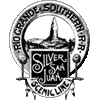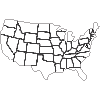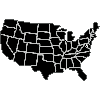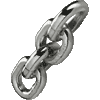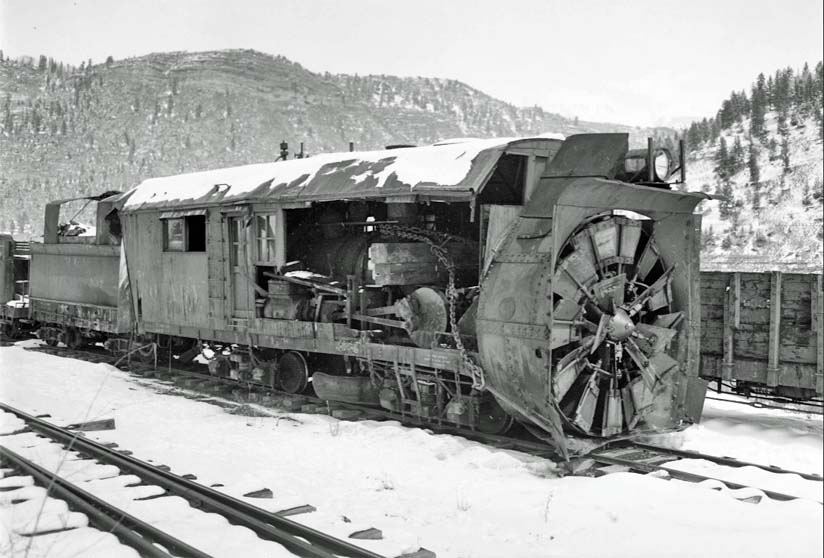
Colorado USA - Rotary snow plows were an important part of snow fighting in the San Juan Mountains on both the Denver & Rio Grande Western (D&RGW) narrow gauge system and the Rio Grande Southern (RGS) Railroad.
The rotaries were similar to today's snow blowers that dig into the snow with blades and then shoot the snow either to the left or the right.
They work fine as long as there are not rocks or timber in the path of the machine that would damage the blades.
The rotaries were most effective in open areas where the snow on the right-of-way had not been part of a snow slide that had brought down rocks and timber.
Locomotive manufacturers built rotaries, as a major component was the steam boiler that powered the large blades.
The Cooke Locomotive Works of Patterson, N.J. was a major manufacturer of rotaries.
The most successful design was patented by the Lesley brothers of Canada, who contracted out the manufacturing of the their rotaries.
There were no special designs for the rotaries that operated on the narrow gauge.
A standard gauge rotary was merely fitted with narrow gauge trucks.
In the early 1890s Otto Mears purchased two new rotaries for the RGS.
These were numbered 1 and 2.
Number 1 was used for just one winter and later was sold off as surplus equipment.
At the time Otto paid about US$19,000 each for the rotaries.
In the 1890s a used narrow gauge 2-8-0 locomotive could be purchased for US$4,500.
RGS Rotary number 2 remained in service until its boiler exploded at Vance Junction in January of 1949.
There are written accounts of RGS No. 2 being used to clear snow on the D&RGW San Juan Extension east of Chama, New Mexico.
Number 2 collapsed RGS bridge 89A during the winter of 1914.
The Rotaries were heavy pieces of equipment and were a poor way of testing the safety of bridges and trestles.
Because of their weight, and not being self-propelled, it was necessary to push the rotaries with locomotives.
Often as many as five 2-8-0 locomotives were used to push RGS Rotary No. 2 up grade.
The D&RGW had four rotaries on its narrow gauge system.
Rather than numbering its rotaries they had letters, OM, ON, OO, and OY.
The D&RGW used "O" as the first identifying mark on its non-revenue rolling stock.
Caboose 0575 and water service car O4914 at the Ridgway Railroad Museum are examples of this system.
The D&RGW line between Antonio and Chama was almost ideal for rotary operation.
On the other hand, the line between Durango and Silverton was ill-suited for rotaries because of the slides.
The alternative method in the Animas Canyon was the use of a ditcher, and/or hand shoveling.
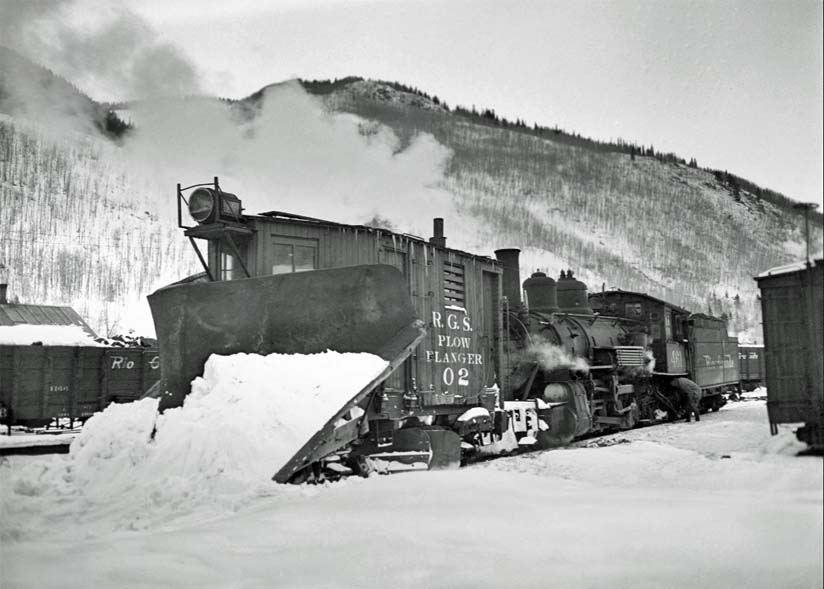
Each of the D&RGW rotaries has an interesting history.
OM was based in Chama for use on the western side of Cumbres Pass.
OY was based in Alamosa for use on the eastern side of Cumbres.
OY, which was purchased in 1923, was the largest of the D&RGW rotaries, weighing 140,000 pounds.
Both these rotaries are now displayed in Chama, and are owned by the Cumbres & Toltec Scenic Railroad.
Rotary OO was purchased used in 1920 for US$17,000 from the Colorado Fuel & Iron Company (CF&I).
The CF&I had used the rotary on its Crystal River Railroads.
Because one of these roads was standard gauge, while the other was narrow gauge, the CF&I rotary had two sets of trucks.
When purchased by the D&RGW rotary OO was assigned to Gunnison for use on the Crested Butte, Floresta, and Anthracite Branches.
Rotary OO, which was the smallest of the D&RGW rotaries at 80,000 pounds, and unlike rotaries OM and OY, OO operated without outfit cars (kitchen, bunk, etc.) and was tied up each night at Crested Butte or Gunnison.
It was retired in 1955 and scrapped at Gunnison.
Rotary ON, which was purchased in 1889, along with OM, was based in Salida for use on Marshall Pass and the Monarch Branch.
In 1942 ON was shipped to the White Pass & Yukon Route for service during WWII.
On the WP&YR it became their Rotary number 3.
It was taken out of service in 1947, and was scrapped in 1968 at Skagway.
On 18 Mar 1918, as a D&RGW passenger train approached Chipeta Falls it was struck by an avalanche sending the baggage and mail cars into the Gunnison River.
By the time the snow was done sliding the train was blocked both front and rear.
In an attempt to rescue the passengers the railroad ordered out rotary ON.
A rotary had never been used west of Gunnison because of concerns about the ability of the bridges near (old) Sapinero to handle the weight of the rotary.
Those worries were confirmed when rotary ON broke through a small bridge enroute to the marooned train.
With the rotary out of service the railroad used a wedge plow to reach the accident site.
Among the nearly fifty passengers there were two fatalities.
Engineer Lewis Lathop was quoted as saying "Anyone who ventured into the Black Canyon that year will never forget the experience. The thaw had caused the walls of the canyon to vomit hundreds of snow slides, passengers and crew were stalled there, listening to the constant thunder of running slides, not knowing when one would smash into their outfit."
Author unknown.
provisions in Section 29 of the Canadian
Copyright Modernization Act.

